In honor of National Trails Day, http://www.nationaltrailsday.org on June 6th we’re publishing — belatedly — this post about visiting Jiro Yonezawa last summer at Haystack in Deer Isle, Maine, which features miles of beach and wooded hiking trails. Last month, Jiro received a Special Prize at the Japan Contemporary Craft Exhibition held at the National New Art Museum in Tokyo. Jiro’s was the only work of bamboo to be awarded a prize.
We’ve brought you several artist and student reports from the Haystack School of Crafts in Maine http://www.haystack-mtn.org/index.php in previous posts on arttextstyle. (Visit: David Ling https://arttextstyle.com/2014/02/06/dispatches-david-ling-haystack-school-crafts-deer-isle-maine/; Hisako Sekijima https://arttextstyle.com/guest-post-hisako-sekijima/; Nancy Moore Bess https://arttextstyle.com/guest-posts/ to get a good sense of the Haystack experience.) Last August, we had the chance to visit Haystack ourselves as we were vacationing in nearby Stonington, Maine. Haystack is in a glorious location and we visited on a crystalline day. Jiro Yonezawa’s
Bamboo Weaving Techniques and Decoration class was kind enough to let us interrupt. The students were excited and engaged and grateful for Jiro’s generous teaching. One described his helping her until 1 a.m. that morning. Each student had interesting and accomplished works to show for his or her time there. Carter is now angling to attend a session. Other art-y activities we enjoyed on our trip: the terrific Turtle Gallery in Deer Isle http://www.turtlegallery.com; the sprawling sculpture center created by Peter Beerits at Nervous Nellie’s Jams and Jellies in Deer Isle http://www.nervousnellies.com/peter-beerits-sculpture/ and the creatively curated collection of buoys and locks and knots and ropes at the Marlinspike Chandlery in Stonington http://www.marlinespike.com/. The locale offers art appreciation, hiking, kayaking, great eating, and, as always, a great time was had by all.

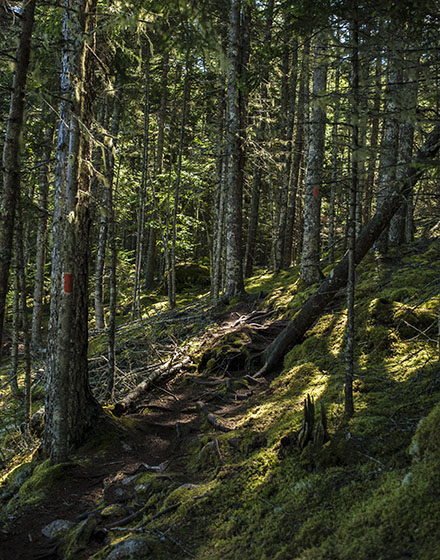

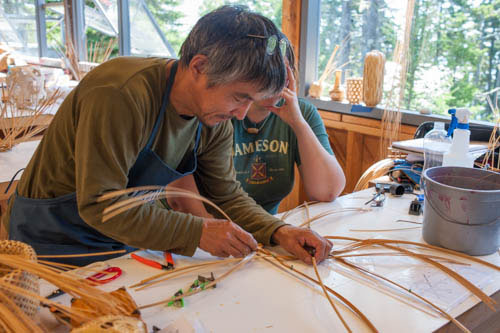
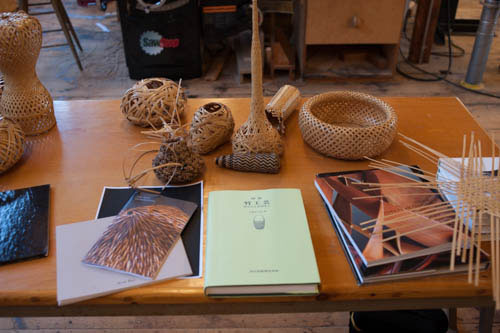
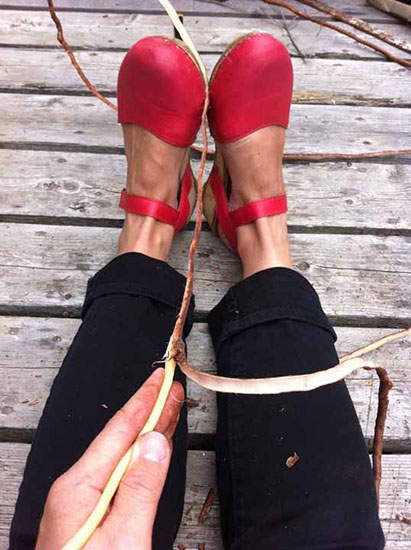

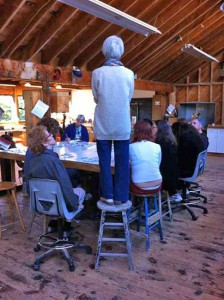
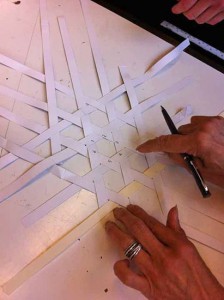

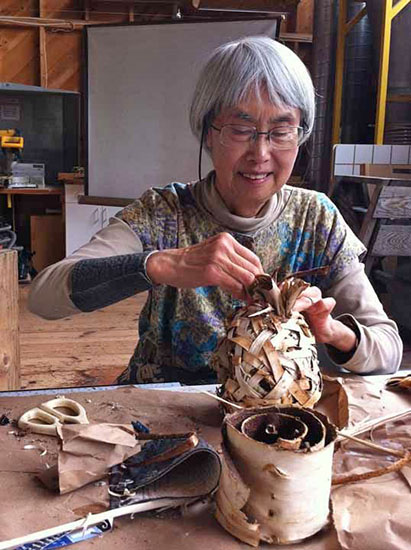
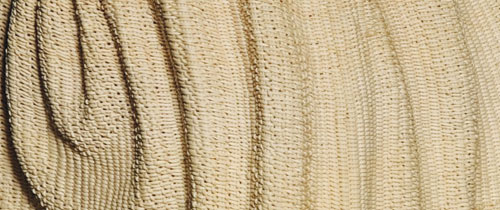
Guest Post: David Ling at Haystack School of Crafts, Deer Isle, Maine
photo by David Ling
Nestled into the stoney evergreen clad ledge that seems to slip effortlessly into the atlantic off the coast of Deer Isle Maine, Haystack was to prove a desirable radical contrast to New York City, business and routine.
1000 miles, six ferries, two weeks of glass workshop, 42 haystack meals (in addition to the 10 lobster rolls en route) no cell connection and barely any online connection, the contrast was complete.
photo by David Ling
Initially drawn to haystack for its architectural and landscape setting as well as the reputation I heard over the decades of serving collectors and working with the artisans, I wanted to experience haystack for myself.The link between my architectural practice and haystack is glass. I love glass. With my Modernist Bauhaus background, I grew to appreciate and love glass. Starting with Paul Scheerbart, Bruno Taut, and the Crystal chain letters, glass took on utopian mythical proportions. Studying in Crown Hall, Mies’ glass temple to architectural education, I loved watching how the translucent glass captured light and became a filter for experiencing nature. Later, after starting my own practice, I created glass windows, glass floors, glass ceilings, glass roofs, glass furniture all using
photo by David Ling
tempered, laminated, annealed, acid etched, sandblasted, fractured glass in my work. But that’s where the similarities end. The very physical act of working with glass was to prove radically different from using glass in my architectural practice. I discovered that the very process of blowing glass requires teamwork, physical participation. Working with glass I found, required both focus and a peripheral awareness of my collaborators, heat –and not just any heat but adjusting heat with time in the air, contact with the stainless steel marver, water and wood. I found the luminous fluid quality of molten glass mesmerizing. Streams, puddles and droplets of liquid light.
In contrast to the flat planar architectural applications of glass, I learned through experimentation how glass could take on other qualities in its molten state: elastic, malleable, impervious, explosive, optical. I also started relearning how to experiment, explore and return to a childlike curiosity.
photo by David Ling
While I’m not sure how haystack will affect my future work, I am compelled by not just glass itself but how light and water play with glass. On a personal level I rediscovered child like playfulness, learning to experiment and embracing trial amd error. Collaborating with my classmates was a balletic choreography involving heat and light.
Our instructor Bo Yoon was instrumental in opening my eyes to the unique qualities of glass, not just technique.
As a class, we collectively produced a glass boat, a tree draped in glass strands, mini glass grenades, water filled glass prisms and lenses. One of the most interesting thrusts of Bo’s class and when I was most interested in was the combination of the qualities of glass interacting with water and light. With my rudimentary skills and overwhelming help from Bo, teaching assistants and fellow classmates I produced a diving bell helmet out of class. With an unobstructed view of the underwater world I could bob in the Atlantic coastal waters, listening to my own breathing and waves amplified by the buoyant glass bubble.
David Ling Architect
davidlingarchitect.com